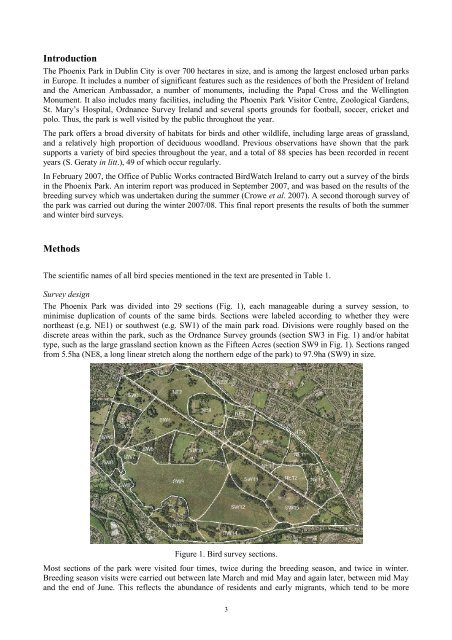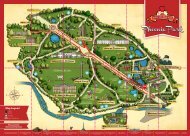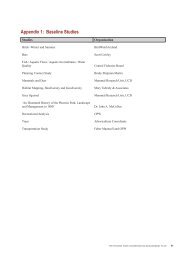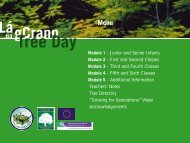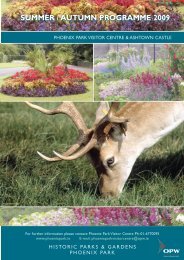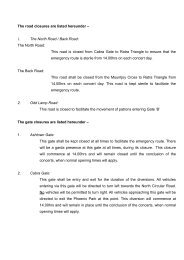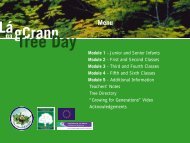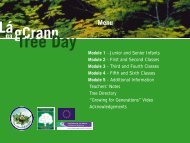The Birds of the Phoenix Park, County Dublin: Results of a survey in ...
The Birds of the Phoenix Park, County Dublin: Results of a survey in ...
The Birds of the Phoenix Park, County Dublin: Results of a survey in ...
You also want an ePaper? Increase the reach of your titles
YUMPU automatically turns print PDFs into web optimized ePapers that Google loves.
Introduction<br />
<strong>The</strong> <strong>Phoenix</strong> <strong>Park</strong> <strong>in</strong> <strong>Dubl<strong>in</strong></strong> City is over 700 hectares <strong>in</strong> size, and is among <strong>the</strong> largest enclosed urban parks<br />
<strong>in</strong> Europe. It <strong>in</strong>cludes a number <strong>of</strong> significant features such as <strong>the</strong> residences <strong>of</strong> both <strong>the</strong> President <strong>of</strong> Ireland<br />
and <strong>the</strong> American Ambassador, a number <strong>of</strong> monuments, <strong>in</strong>clud<strong>in</strong>g <strong>the</strong> Papal Cross and <strong>the</strong> Well<strong>in</strong>gton<br />
Monument. It also <strong>in</strong>cludes many facilities, <strong>in</strong>clud<strong>in</strong>g <strong>the</strong> <strong>Phoenix</strong> <strong>Park</strong> Visitor Centre, Zoological Gardens,<br />
St. Mary’s Hospital, Ordnance Survey Ireland and several sports grounds for football, soccer, cricket and<br />
polo. Thus, <strong>the</strong> park is well visited by <strong>the</strong> public throughout <strong>the</strong> year.<br />
<strong>The</strong> park <strong>of</strong>fers a broad diversity <strong>of</strong> habitats for birds and o<strong>the</strong>r wildlife, <strong>in</strong>clud<strong>in</strong>g large areas <strong>of</strong> grassland,<br />
and a relatively high proportion <strong>of</strong> deciduous woodland. Previous observations have shown that <strong>the</strong> park<br />
supports a variety <strong>of</strong> bird species throughout <strong>the</strong> year, and a total <strong>of</strong> 88 species has been recorded <strong>in</strong> recent<br />
years (S. Geraty <strong>in</strong> litt.), 49 <strong>of</strong> which occur regularly.<br />
In February 2007, <strong>the</strong> Office <strong>of</strong> Public Works contracted BirdWatch Ireland to carry out a <strong>survey</strong> <strong>of</strong> <strong>the</strong> birds<br />
<strong>in</strong> <strong>the</strong> <strong>Phoenix</strong> <strong>Park</strong>. An <strong>in</strong>terim report was produced <strong>in</strong> September 2007, and was based on <strong>the</strong> results <strong>of</strong> <strong>the</strong><br />
breed<strong>in</strong>g <strong>survey</strong> which was undertaken dur<strong>in</strong>g <strong>the</strong> summer (Crowe et al. 2007). A second thorough <strong>survey</strong> <strong>of</strong><br />
<strong>the</strong> park was carried out dur<strong>in</strong>g <strong>the</strong> w<strong>in</strong>ter 2007/08. This f<strong>in</strong>al report presents <strong>the</strong> results <strong>of</strong> both <strong>the</strong> summer<br />
and w<strong>in</strong>ter bird <strong>survey</strong>s.<br />
Methods<br />
<strong>The</strong> scientific names <strong>of</strong> all bird species mentioned <strong>in</strong> <strong>the</strong> text are presented <strong>in</strong> Table 1.<br />
Survey design<br />
<strong>The</strong> <strong>Phoenix</strong> <strong>Park</strong> was divided <strong>in</strong>to 29 sections (Fig. 1), each manageable dur<strong>in</strong>g a <strong>survey</strong> session, to<br />
m<strong>in</strong>imise duplication <strong>of</strong> counts <strong>of</strong> <strong>the</strong> same birds. Sections were labeled accord<strong>in</strong>g to whe<strong>the</strong>r <strong>the</strong>y were<br />
nor<strong>the</strong>ast (e.g. NE1) or southwest (e.g. SW1) <strong>of</strong> <strong>the</strong> ma<strong>in</strong> park road. Divisions were roughly based on <strong>the</strong><br />
discrete areas with<strong>in</strong> <strong>the</strong> park, such as <strong>the</strong> Ordnance Survey grounds (section SW3 <strong>in</strong> Fig. 1) and/or habitat<br />
type, such as <strong>the</strong> large grassland section known as <strong>the</strong> Fifteen Acres (section SW9 <strong>in</strong> Fig. 1). Sections ranged<br />
from 5.5ha (NE8, a long l<strong>in</strong>ear stretch along <strong>the</strong> nor<strong>the</strong>rn edge <strong>of</strong> <strong>the</strong> park) to 97.9ha (SW9) <strong>in</strong> size.<br />
Figure 1. Bird <strong>survey</strong> sections.<br />
Most sections <strong>of</strong> <strong>the</strong> park were visited four times, twice dur<strong>in</strong>g <strong>the</strong> breed<strong>in</strong>g season, and twice <strong>in</strong> w<strong>in</strong>ter.<br />
Breed<strong>in</strong>g season visits were carried out between late March and mid May and aga<strong>in</strong> later, between mid May<br />
and <strong>the</strong> end <strong>of</strong> June. This reflects <strong>the</strong> abundance <strong>of</strong> residents and early migrants, which tend to be more<br />
3


